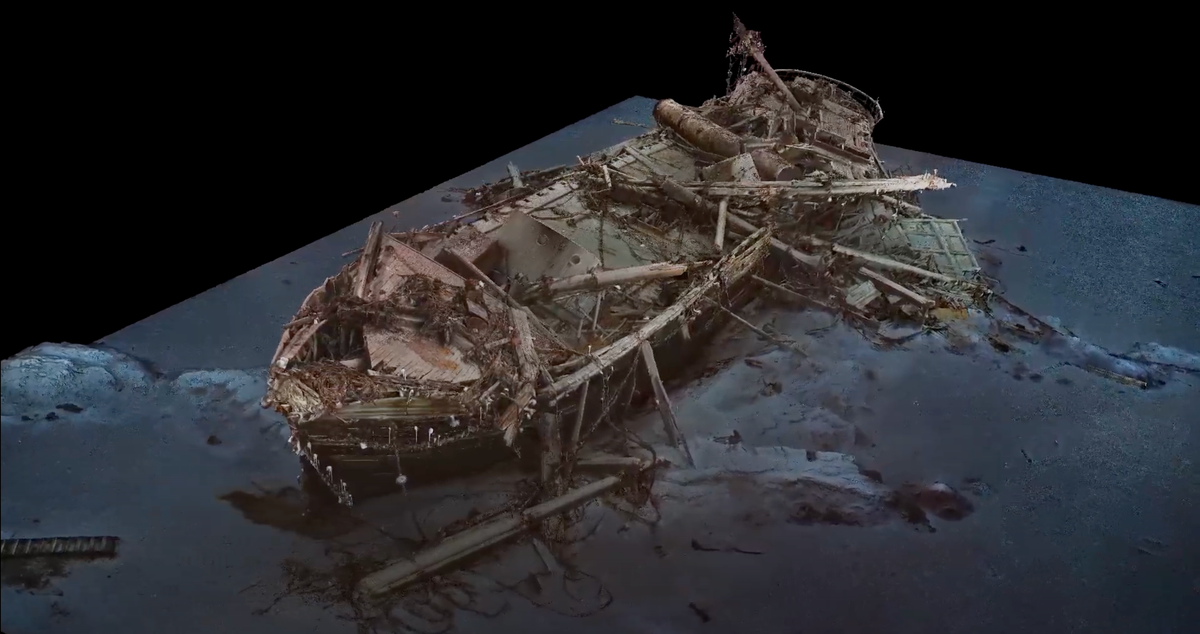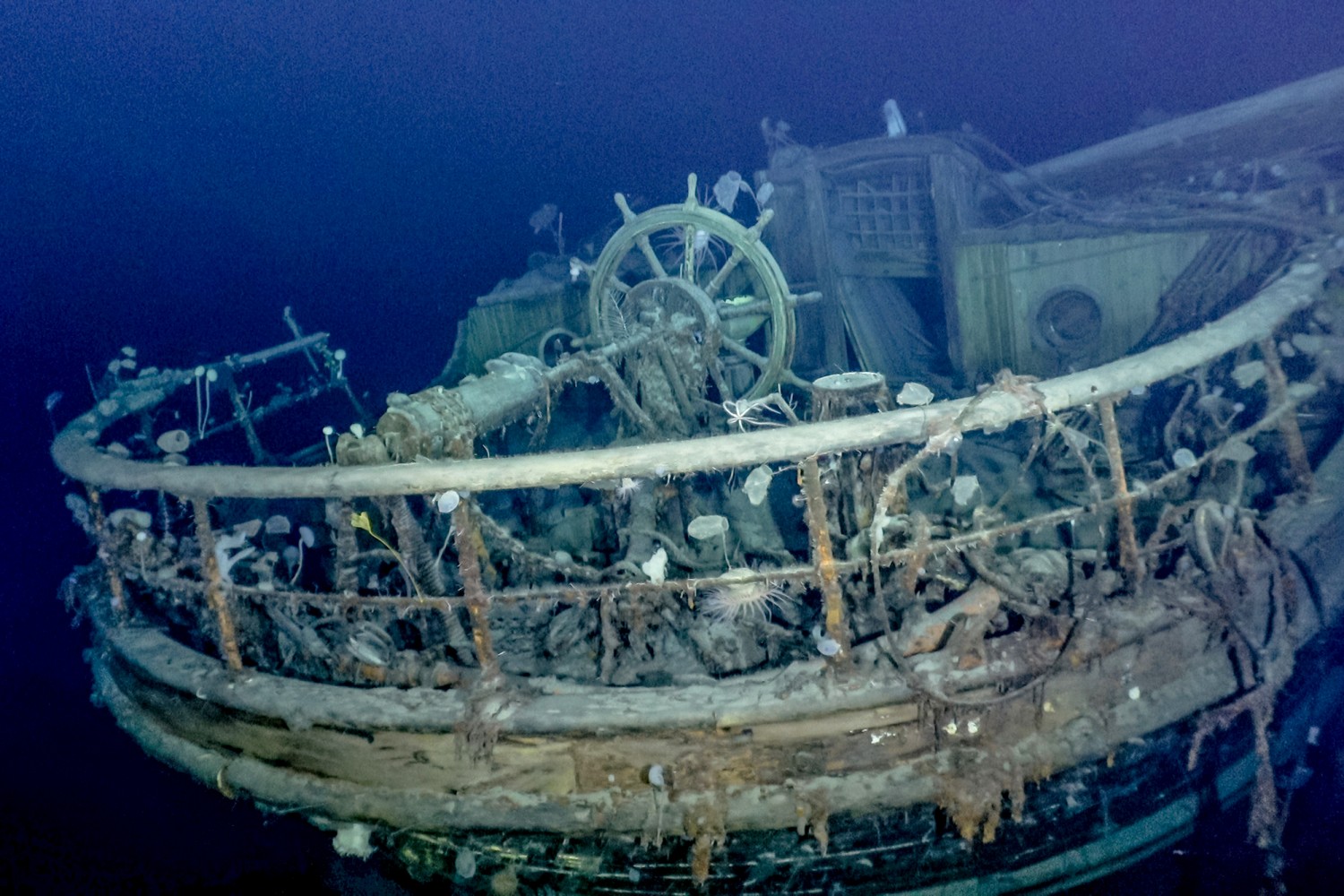The Return of a Legend
In the icy expanse of Antarctica’s Weddell Sea, one of the world’s greatest maritime mysteries has finally been solved. More than a century after its disappearance beneath crushing ice, Sir Ernest Shackleton’s ship Endurance has been found — astonishingly intact, resting nearly 3,000 meters below the frozen surface.
For historians and explorers alike, the rediscovery of Endurance is more than an archaeological triumph. It’s a moment that brings new life to one of humanity’s most extraordinary tales of courage, endurance, and survival.
A Doomed Expedition

In 1914, British explorer Sir Ernest Shackleton set out on his most ambitious venture yet — the Imperial Trans-Antarctic Expedition. His goal was to achieve the first land crossing of Antarctica, traveling from the Weddell Sea on one side to the Ross Sea on the other.
But Antarctica had other plans. By early 1915, Endurance became trapped in thick pack ice, immobilized in one of the most unforgiving environments on Earth. For months, the 28-man crew endured sub-zero temperatures, dwindling supplies, and the eerie sounds of their wooden ship creaking under the pressure of the shifting ice.
On November 21, 1915, the ice finally crushed the vessel. Shackleton and his men watched helplessly as Endurance slipped beneath the frozen sea, leaving them stranded hundreds of miles from civilization.
Survival Against All Odds

What followed has become one of the greatest survival stories in history. Stranded on drifting ice, Shackleton refused to surrender to despair. With remarkable leadership, he kept his crew united and focused.
The men hauled lifeboats across the frozen wasteland and eventually launched them into open water, navigating to the uninhabited Elephant Island. From there, Shackleton and five of his strongest sailors embarked on an 800-mile journey across treacherous seas in a small boat, the James Caird, to seek help from a whaling station on South Georgia Island.
Miraculously, every crew member survived. Their story of resilience, teamwork, and determination became a lasting symbol of human endurance.
Rediscovering a Lost Icon

For over a century, Endurance lay hidden beneath the Antarctic ice. Despite numerous search attempts, the exact location of the wreck remained elusive — until March 2022, when a mission by the Falklands Maritime Heritage Trust finally succeeded.
Using state-of-the-art sonar systems and autonomous underwater vehicles (AUVs), the team located the ship resting upright on the seafloor, about four miles south of the position recorded in Shackleton’s logs.
Expedition director Dr. John Shears described the moment as “one of the greatest polar discoveries of all time.” What they saw exceeded every expectation.
Preserved by Ice and Time

In the frigid waters of the Weddell Sea, where temperatures hover below freezing, microorganisms that typically consume wood cannot survive. This unique environment preserved Endurance in astonishing detail.
The ship’s hull remains intact, its steering wheel still in place, and the word “ENDURANCE” clearly visible across the stern. Even ropes, tools, and parts of the deck appear frozen in time, as if waiting for the crew to return.
Marine archaeologist Mensun Bound, who led the search, remarked:
“Without exaggeration, this is the finest wooden shipwreck I have ever seen. It’s as if time itself paused the moment it sank.”
A Digital Resurrection

Beyond its discovery, what truly sets the Endurance mission apart is its use of modern technology to digitally resurrect the ship. More than 25,000 high-resolution images were captured by underwater cameras, allowing researchers to build a full 3D reconstruction of the wreck.
These detailed scans provide unprecedented insight into early 20th-century shipbuilding. Endurance was engineered specifically for polar exploration, featuring an oak and pine hull reinforced with steel plating designed to withstand immense ice pressure.
Through these digital models, historians and the public can now explore the ship virtually — from its stern lettering to its intricate rigging — without disturbing the fragile site itself.
A Protected Cultural Treasure
Recognizing the historic and cultural importance of Endurance, the expedition team followed strict conservation protocols. No artifacts were removed from the site, ensuring it remains preserved under the Antarctic Treaty, which protects such heritage from disturbance or exploitation.
Instead, every detail was meticulously documented, creating a digital archive that will inform future research for decades to come. The discovery not only honors Shackleton’s legacy but also reinforces the importance of protecting shared human history beneath the world’s oceans.
Why Shackleton’s Legacy Endures
The rediscovery of Endurance is not just about a ship — it’s about the spirit it represents. Shackleton’s expedition, though a failure in its original aim, became a timeless lesson in leadership and perseverance.
At a time when exploration was a battle against both nature and human limitation, Shackleton’s calm resolve saved his crew against impossible odds. His mantra — “Difficulties are just things to overcome” — still resonates with adventurers, scientists, and leaders today.
Modern explorers see Endurance as more than an artifact of history. It is a symbol of what humanity can achieve when courage, ingenuity, and unity prevail against overwhelming adversity.
Bridging Past and Present
The emergence of Endurance from the Antarctic depths connects the modern world with the heroic age of exploration. For the first time, we can witness the ship as it lies silently on the seafloor — a frozen monument to endurance itself.
Through digital preservation, Shackleton’s ship continues to inspire, reminding us that exploration is not just about discovery, but about resilience in the face of the unknown.
Over a century after its sinking, Endurance still lives up to its name — a testament to the unyielding human spirit and the endless curiosity that drives us to seek, to survive, and to understand.
Sources
- BBC – “Endurance: Shackleton’s Ship Found in Antarctic Sea”
- National Geographic – “Shackleton’s Endurance Found After a Century”
- Smithsonian Magazine – “How the Endurance Was Finally Found”
- The Guardian – “Endurance Shipwreck Found in Antarctic 107 Years After Sinking”
